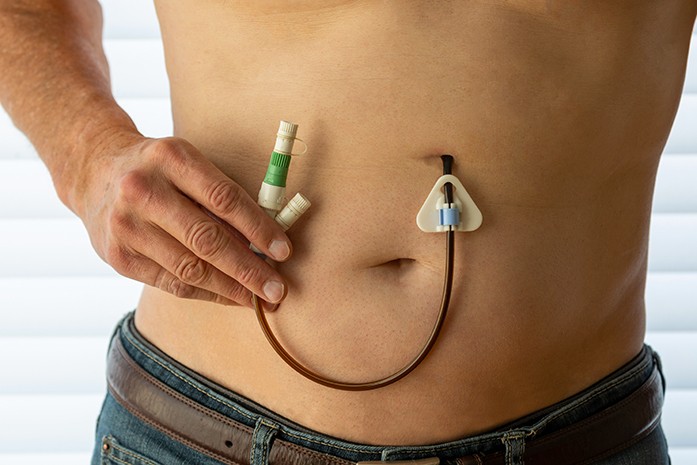
Image Source: Google
Jejunostomy tube insertion is a medical procedure that involves placing a tube into the jejunum, the middle part of the small intestine, to provide nutrition and medications to patients who are unable to eat or digest food normally. This comprehensive guide is designed to help caregivers and patients understand the basics of jejunostomy tube insertion, including the procedure itself, post-insertion care, and potential complications to watch out for.
Understanding Jejunostomy Tube Insertion
Procedure Overview
- Jejunostomy tube insertion is typically performed by a healthcare provider, often a surgeon or gastroenterologist, in a hospital or outpatient setting.
- The procedure involves making a small incision in the abdomen and inserting a tube directly into the jejunum, which is then secured in place with sutures or a balloon device.
- Jejunostomy tubes can be used for feeding, administering medications, or both, depending on the patient's needs.
Indications for Jejunostomy Tube Insertion
- Patients who may benefit from a jejunostomy tube include those with swallowing difficulties, severe malnutrition, gastrointestinal disorders, or head and neck cancer.
- Jejunostomy tubes are also used in cases where the stomach or first part of the small intestine (duodenum) is dysfunctional or inaccessible.
Post-Insertion Care
Feeding and Medication Administration
- After jejunostomy tube insertion, healthcare providers will provide instructions on how to feed and administer medications through the tube.
- Specialized liquid nutrition formulas may be recommended to ensure adequate calorie and nutrient intake.
- Medications should be crushed, dissolved, or in liquid form before administration through the tube to prevent blockages.
Tube Maintenance
- Proper care and maintenance of the jejunostomy tube are essential to prevent infections and other complications.
- The tube site should be cleaned regularly with soap and water, and the dressing changed as needed.
- Flushing the tube with water before and after each use can help prevent clogs and ensure proper function.
Potential Complications
Tube Displacement
- In some cases, the jejunostomy tube may become dislodged or migrate out of place, leading to feeding or medication delivery issues.
- If the tube appears to be out of position or is no longer functioning properly, healthcare providers should be notified immediately for assessment and possible reinsertion.
Infection
- Improper care of the jejunostomy tube site can increase the risk of infection, which may present as redness, swelling, pain, or discharge at the insertion site.
- Antibiotics may be prescribed to treat infections, and proper hygiene practices should be followed to prevent recurrence.
Tube Blockage
- Tube blockages can occur due to formula or medication buildup, inadequate flushing, or kinking of the tube.
- Symptoms of tube blockage may include abdominal pain, nausea, vomiting, or difficulty flushing the tube.
Conclusion
Jejunostomy tube insertion is a valuable intervention for patients who require alternative means of nutrition and medication delivery. By understanding the basics of jejunostomy tube insertion, caregivers and patients can ensure proper care and management of the tube, promoting optimal health and well-being. It is essential to follow healthcare provider instructions carefully, seek prompt medical attention for any concerns or complications, and maintain open communication with the healthcare team throughout the jejunostomy tube insertion process.